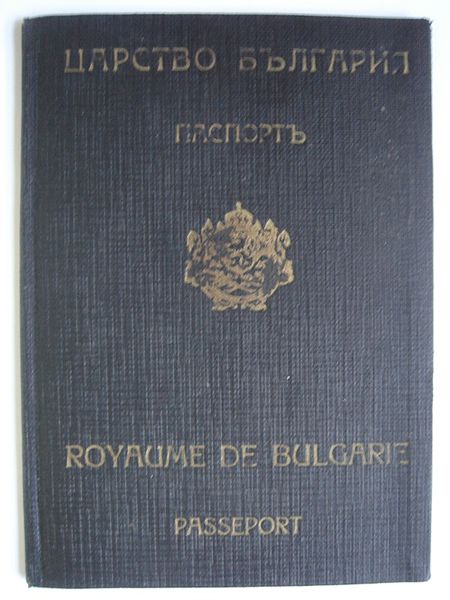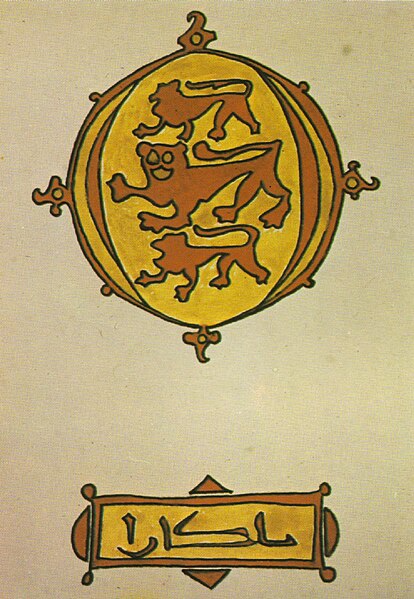The coat of arms of Bulgaria consists of a crowned golden lion rampant over a dark red shield; above the shield is the Bulgarian historical crown. The shield is supported by two crowned golden lions rampant; below the shield there is compartment in the shape of oak twigs and white bands with the national motto "Unity makes strength" inscribed on them.
Front cover of the first Bulgarian Tarnovo Constitution from 1879 with early version of the coat of arms on it.
Passport of the Tsardom of Bulgaria with version of the coat of arms from the period 1927–1946 on it, c. 1944.
President of Bulgaria Georgi Parvanov and President of the United States George W. Bush in front of the coat of arms in Sofia, June 11, 2007.
Shield of a royal warrior from the end of 14th century, anonymous Arabic traveler.
The lion is a common charge in heraldry. It traditionally symbolises courage, nobility, royalty, strength, stateliness and valour, because historically the lion has been regarded as the "king of beasts". The lion also carries Judeo-Christian symbolism. The Lion of Judah stands in the coat of arms of Jerusalem. Similar-looking lions can be found elsewhere, such as in the coat of arms of the Swedish royal House of Bjelbo, from there in turn derived into the coat of arms of Finland, formerly belonging to Sweden.
A Lion of Saint Mark, from the Echternach Gospels (late 7th century).
Enamel from the tomb of Geoffrey Plantagenet, Count of Anjou (c. 1160).
The shield of Conrad of Thuringia (c. 1230s), a rare example of a preserved 13th-century knightly shield, displaying the Ludovingian lion barry.
The coat of arms of the Landgrave of Hesse in the Wernigerode Armorial (late 15th century), shown as combining the lions of Hesse, Katzenelnbogen and Diez)








